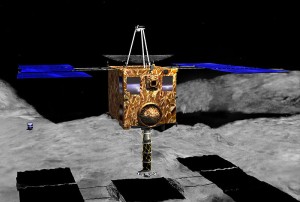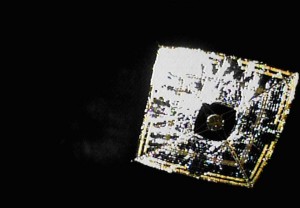Jun 16 2010
Kudos Japan
The Japanese space program is doing some cool shit in the way of interplanetary spacecraft, and I have to hand it to them. I’m primarily impressed by their sheer ambition, launching bleeding edge missions that the more conservative NASA would tend to work their way up to. With previous interplanetary experience consisting of a couple probes to Halley’s Comet in the 80s and the Nozomi Mars orbiter in the 90s, JAXA launched Hayabusa seven years ago, on a sample collection mission to asteroid Itokawa.
This was the first attempted asteroid sample return mission by any nation. It was also powered by electric ion propulsion, a still fairly new technology that provides a long (years) but light push with little fuel mass compared to chemical rockets, and could autonomously navigate. After reaching the asteroid in 2005, it commenced trying to capture a sample, but here is where things started going wrong.
There were a couple brief landings but it didn’t seem that the pellet gun fired to cause debris to be captured. Also, a separate mini-lander called MINERVA was released too far from the surface. (Again – trying a lot of new things on one mission. And the mini-lander seems straight out of some Anime plot) Due to some malfunctions, getting the probe back to Earth has taken 5 years of Apollo 13 style engineering improvisation. Failing attitude control gyros were compensated for by angling the solar panels to surf the solar wind. Intermittent functioning of the 4 ion engines required constant navigational changes and (somehow) re-routing of components from two of the engines to allow operation of one.
All this resulted in the successful re-entry of the sample return capsule on Sunday. In the great video below, the capsule is at lower right, while the rest of the spacecraft is disintegrating behind it. Now we wait to find out if there was actually any sample dust inside.
As if that we’re impressive enough, JAXA just launched a solar sail demonstrator mission called IKAROS which has unfurled it’s sail successfully. This is the first functioning solar sail to be deployed – which relies on the radiation pressure of sunlight to provide propulsion. Solar panels are integrated into the sail, as well as variable reflectance patches for steering (this is crazy). And if that’s not enough for you, IKAROS released a small camera module to grab the below image of itself, relayed back to IKAROS wirelessly.
Really Japan – now you’re just showing off.
No responses yet

